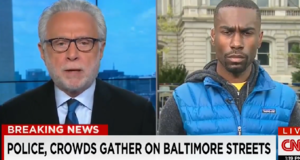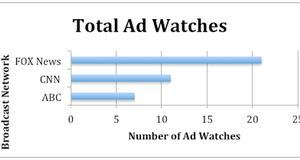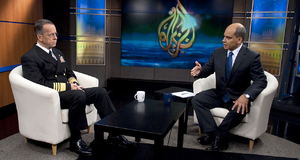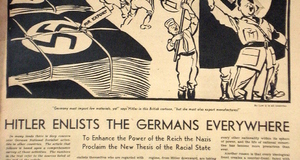From Elon Journal of Undergraduate Research in Communications VOL. 4 NO. 2Public Perceptions of Media Bias: A Meta-Analysis of American Media Outlets During the 2012 Presidential ElectionV. ConclusionIn summation, the extant data and research presented in this paper does not support the existence of a liberal media bias as it relates to mainstream 2012 election coverage. If anything, analysis of the discussed content contradicts ongoing public assumption, indicating a measurable ideological imbalance in typically required non-partisan coverage, one that tips overwhelmingly in favor of then Republican candidate Mitt Romney. If anything else, the statistics presented in this paper clearly suggest a considerable conservative bias by the mainstream media during the course of the 2012 election, exemplified through their calculated dominant coverage of partisan Republican officials across all major news mediums. This analysis has sought to demonstrate that the stigmatization of the American media and its perceived liberal partiality stems from a series of interrelated factors that include the roles of partisan identification and need for self-validation of political ideology. As to whether the news media actually contains a discernible liberal or conservative bias; if this study's findings are any indication, it is likely this subject will remain a topic of debate among scholars for decades to come. AcknowledgementsThe author would like to extend his thanks to Dr. David Copeland at Elon University. His constant guidance, encouragement and advice were integral in helping bring this thesis to fruition. The author is also thankful to Drs. Anthony Hatcher, Richard Landesberg and Byung Lee of Elon University for their support and guidance in the conception and revision of this article. ReferencesAlterman, E. (2003). What liberal media? The truth about bias and the news. New York, NY: Basic Books. Anand, Bharat; Di Tella, Rafeal; and Galetovic, Alexander, "Information or Opinion? Media Bias as Product Differentiation," Journal of Economics and Management Strategy, Volume 16, Number 3 (Fall 2007) Pages 635 – 682. Bennett , W. L. (1992). The governing crisis: Media, money, and marketing in American elections . New York , NY: St. Martin's. Bozell, Brent. Media Research Center. An Open Letter to the Biased News Media. 2012. Print. Candidate Coverage Among Top Print Outlets. 2012. Infographic. 4thestate.netWeb. 12 April 2013. Cline, A. (2008). Media / Political Bias. Retrieved April 2013, from Rheotrica: http://www.rhetorica.net Dennis, E.E. (1997). How "liberal" are the media anyway? The continual conflict of professionalism and partisanship. Journal of Press/Politics , 2(4), 115-119. Election Coverage on TV Lacks Substance. 2012. Infographic. 4thestate.netWeb. 12 April 2013. Garner, B. A., and H. C. Black. Black's law dictionary. West Group, 2009. Web. Johnson, T. J., Boudreau , T., & Glowaki , C. (1996 ). Turning the spotlight inward: How leading news organizations covered the media in the 1992 presidential election . Journalism & Mass Communication Quarterly, 73 , 657 – 671 . [Web of Science]. Lacy, S., Fico, F., & Simon, T. (1999). Fairness and balance in the prestige press. Journalism Quarterly. Summer, 1991, pp. 363-370. Lee, T. (2005). The liberal media myth revisited: An examination of factors influencing media bias perception. Journal of Broadcasting and Electronic Media, 49(1), 43-64. Liberal Media Bias: Fact or Fiction. 2012. Infographic. 4thestate.netWeb. 11 April 2013. Mullainathan, S., & Shleifer, A. (2005). "The Market for News," American Economic Review, 95, 1031 – 1053. Negative Coverage Among Top Print Outlets. 2012. Infographic. 4thestate.netWeb. 13 April 2013. Pickett, J. P. (2002). American heritage dictionary (4th ed.). Boston: Houghton Mifflin. Romney Campaign Gets More Coverage Across Media Space. 2012. Infographic. 4thestate.net. Web. 10 April 2013. http://election2012.4thestate.net/romney-campaign-gets-more-coverage-across-mediaspace/>. Streckfuss , Richard. "Objectivity in Journalism: A Search and a Reassessment ." Journalism Quarterly. 67.4 (1990): n. page. Web. 1 May. 2013. eek 09/Objectivity in Journalistm.pdf>. Sutter, Daniel, "Advertising and Political Bias in the Media: The Market for Criticism of the Market Economy," American Journal of Economics and Sociology, Volume 61 (July 2002) Page 725 – 745. "U.S. Distrust in Media Hits New High ." Gallup Politics (2011): n.pag. Gallup Politics. Web. 1 May 2013 .gallup.com/poll/157589/distrust-media-hits-new-high.asp&xgt;. Vallone, R.P., Ross, L., & Lepper, M.R. (1985). The hostile media phenomenon: Biased perception and perceptions of media bias in coverage of the Beirut massacre. Journal of Personality and Social Psychology, 49, 577-588. Watts, M.D., Domke, D., Shah, D.V., & Fan, D.P. (1999). Elite cues and media bias in presidential campaigns: Explaining public perceptions of a liberal press. Communication Research, 26, 144-175. Williams, A. (1975). Unbiased study of television news bias. Journal of Communication, 25 (4), 190-199. Suggested Reading from Inquiries Journal
Inquiries Journal provides undergraduate and graduate students around the world a platform for the wide dissemination of academic work over a range of core disciplines. Representing the work of students from hundreds of institutions around the globe, Inquiries Journal's large database of academic articles is completely free. Learn more | Blog | Submit Latest in Business & Communications |



















